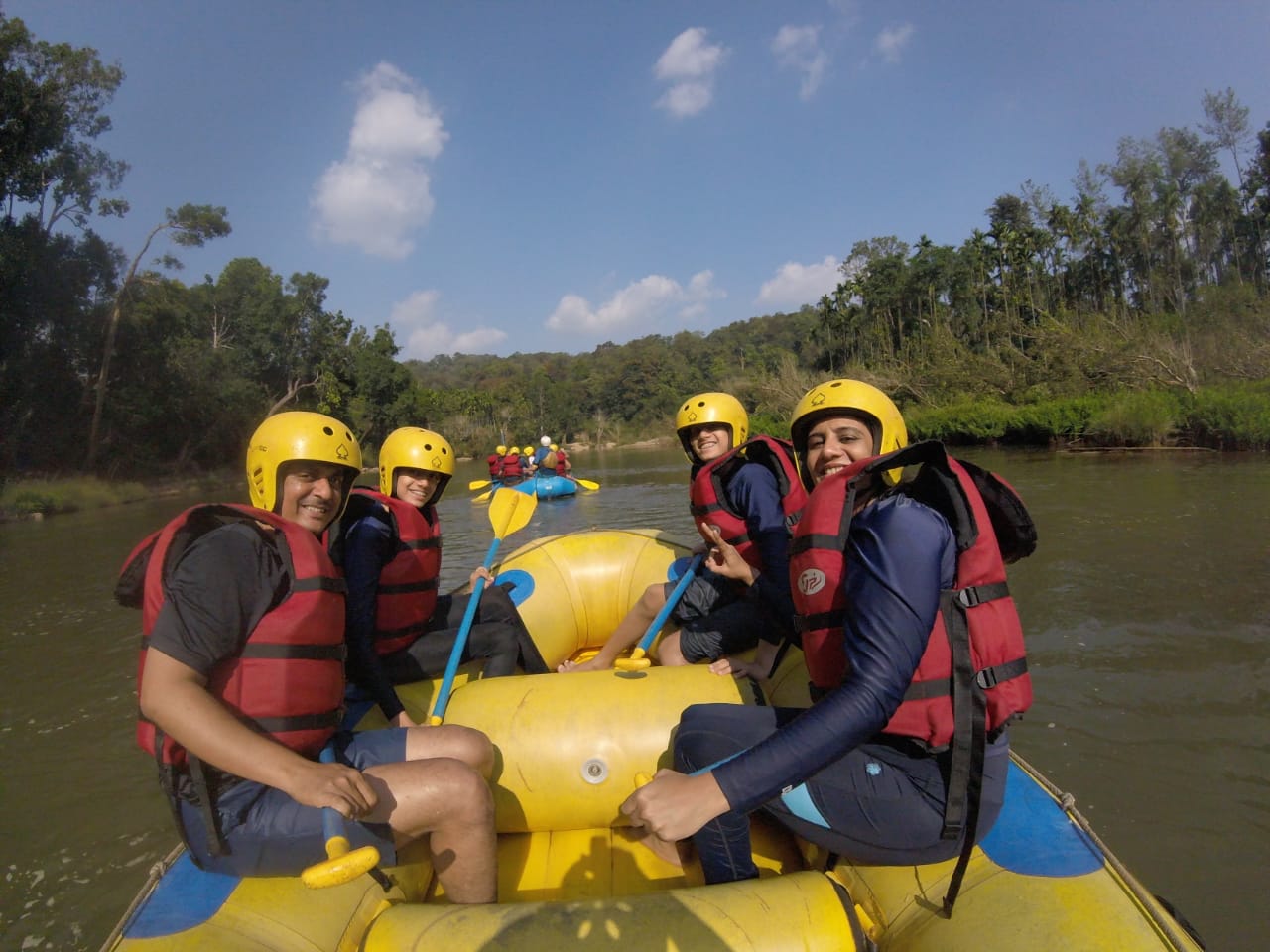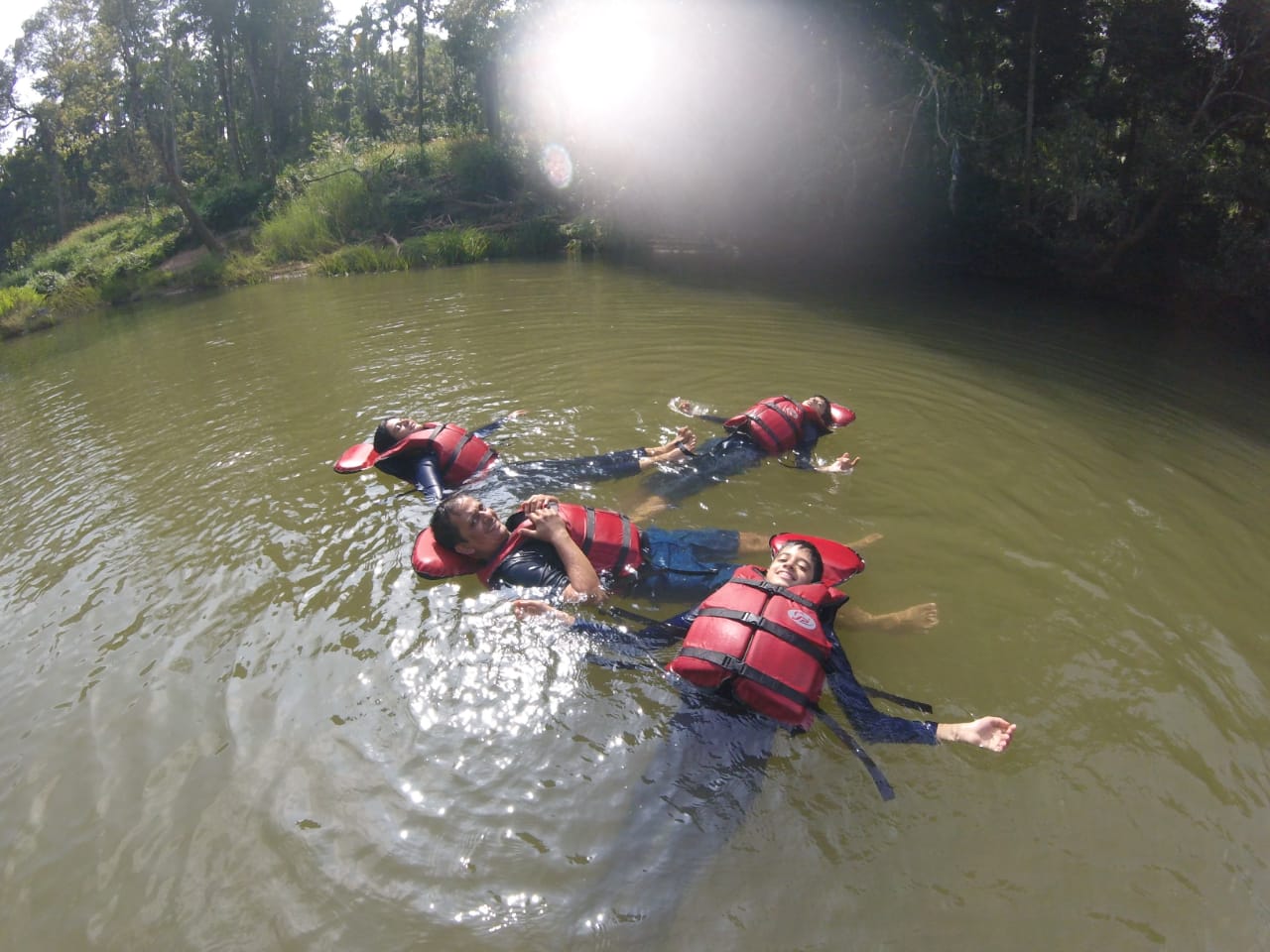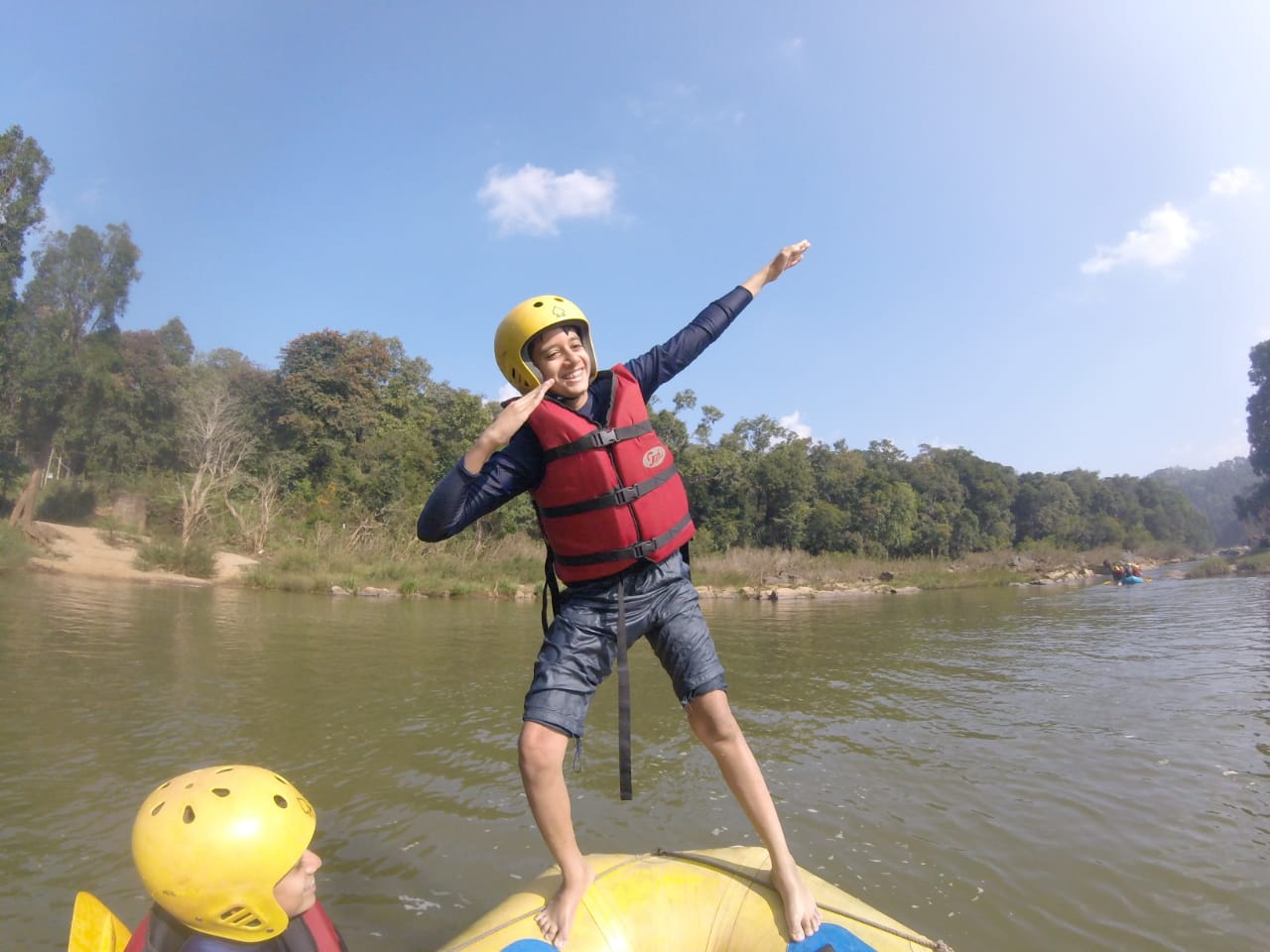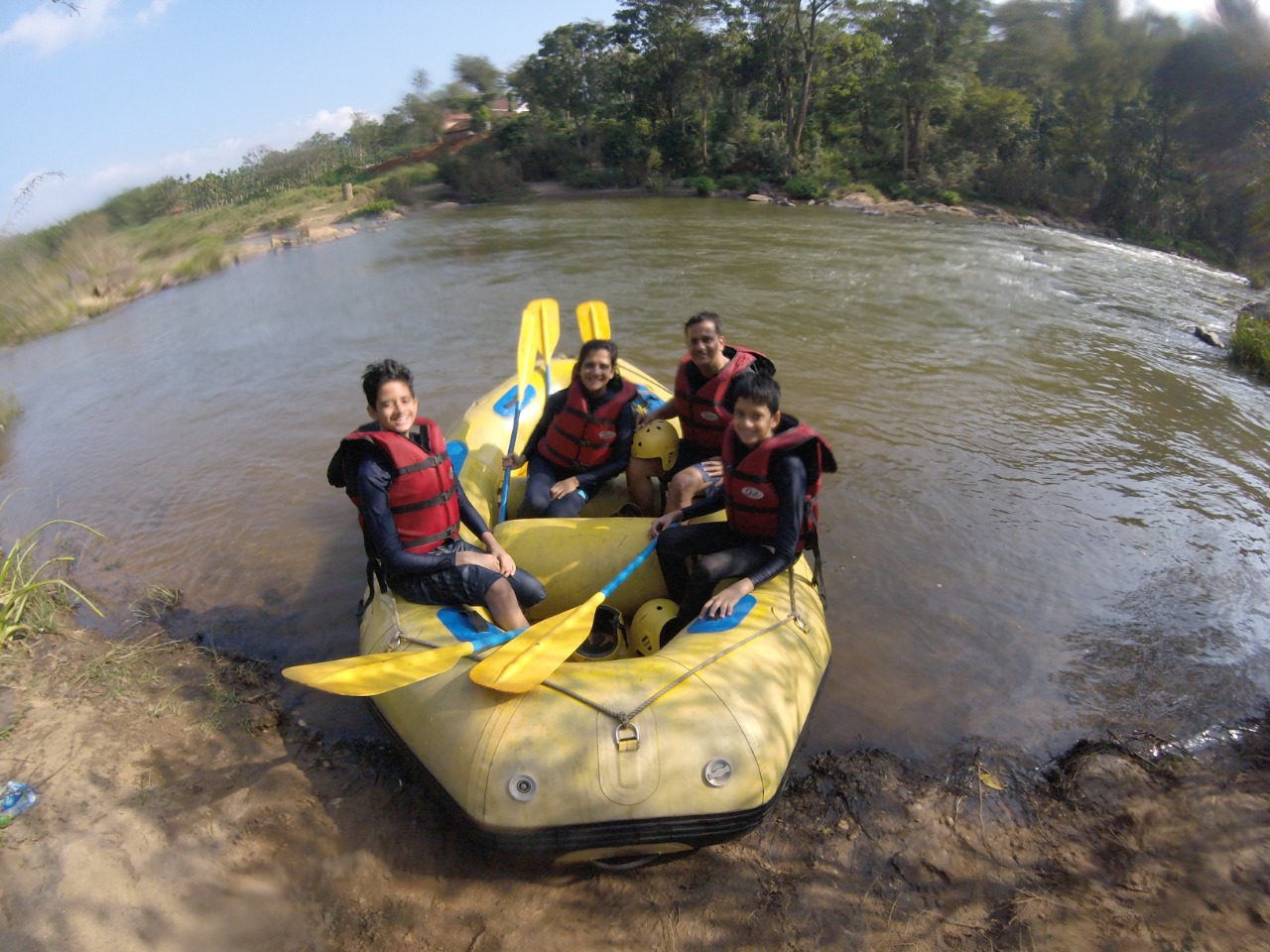During this very precious time that has been offered during the lockdown, I am utilising it by reminiscing my experiences of expeditions to different parts of India and elsewhere.
Rafting in Bhadra
Let this fact be considered; there are two types of persons in the world – one who likes to be aloof in the middle of calm waters, in a canoe, drifting into pleasant oblivion and remain floating in ecstasy without any worries of the world, and one who wants to obtain the thrill that life offers, by plunging into whirling and dangerous rapids with a raft and a paddle, battling with himself and challenging his courage.
To decide which category appeals to my family more, we had to try our hand at both, and then opt for one that satisfies our interests. We were (more or less) unacquainted with what both had to offer.
Our expedition began at Mysore, where we hired a car to drive to Chikmagalur – a hill station carpeted with greenery and rich in iron ore, located in Karnataka. After a five – hour very long drive, we halted at a river rafting point, a few meters above the water level.
Our eyes scanned the same river from the top, examining how it leaps and cascades over gigantic rocks, how its presence itself produces unnerving vibes, how it invites daredevils to test their fate. We were going to be there soon.
After changing into swimwear, we walked down to the banks of the river, where our guide (a well experienced Nepali man) instructed us on the methods to brave the rapids. Each of us was given oars or paddles, life jackets, and helmets.
A paddle has three parts – the blade, the rod in the centre, and a T-grip in the shape of the letter T as the name suggests. We were asked to propel the raft uniformly, for maximum velocity and balance. Our guide also displayed certain brace positions which we were to perform on the river, in accordance with his commands. We were also shown our raft, a petit one because there were only four of us, our parents and us.
Our guide was to assist us in our adventure to control the raft, and also click pictures and take videos, with the help of a waterproof camera attached to his helmet. He was very amiable and assured us that the raft would not imitate the unexpected events of the Titanic.
And so with a push away, we were on the cold waters of the Bhadra. The rapids do not immediately appear as it originates, and there is a long stretch of calm water. The rapids only begin in the lower course, due to the depositional features of the river.
We paddled away for about fifteen to twenty minutes when the guide informed us we had to compulsorily dive into the lucid water, to get acclimatized to the cold water and eliminate any fears in case the raft capsized.
And why would anyone not wish to do so without a valid reason? It is almost impossible to resist the temptation. Trees on both sides, only sounds that can be heard are that of melodious birds, chirping and singing in mirth, and the calm water that rests below only represents serenity and tranquility amidst the hustle-bustle of the world.
Swimming and floating
With the help of our lifejackets we floated in the water, enjoying the peaceful ambience, then our guide hauled us back in the small raft, and we just sat for a few minutes, relishing the peace. Our assistant then instructed us to “paddle forward”, and after a few minutes of doing so, we could view the tumultuous rapids.
“Kneel!”, he commanded, and so we heeded to the brace position command and were quite fortunate to have abided, for the angry, churning waters are no joke. The Bhadra is capable of tossing any raft or boat, and on top of that, the river is sprinkled with a plethora of rocks peeping out of the water everywhere, exhibiting a frightful appearance.
The raft was tossed, swirled, shook, and beat against by the rapids and rocks, and we were incapacitated, for we had no control over it. After clearing those rapids, we witnessed the capsizing of another raft behind us, and the current drifted its members apart. We paddled towards them, managed to collect and prevent their oars from flowing away.
When we knew they were safe, we continued forward, braving multiple rapids. On one such rapid, I had not come in the brace position on the command. The raft collided with a rock, the outcome of which was I lost balance and fell backwards, first on the rock (no injury was caused since I was protected by a life jacket and a helmet) and rebounded into the water. I began floating away from me, but they were able to pull me back to safety.
And he was not at all impacted or traumatized in any way because of the fall in the icy rapids, but instead had enjoyed the thrilling experience! Not only him, but we all had also enjoyed the thrill of rafting.
Rafting is the quintessential sport for all thrill-seekers, who wish to experience the pleasure of calm waters, as well as the kicks of mordacious rapids.
The most splendid rafting location in India is at Rishikesh, where beating the rapids of river Ganges is simply enthralling. Hoping to go there someday!
After getting a taste of both, we fall in the second category, we were ones who wanted to obtain the thrill that life offers, by plunging into whirling and dangerous rapids with a raft and a paddle, battling with ourselves, experiencing the adrenaline rush and challenging our courage.
Adventure, thrill, challenge; or peace, calm, silence – Which one would you choose?

Mustafa Topiwala is a high school student who aspires to use his abilities and talents to help others. Reading, writing poetry, sailing, surfing, and blogging are some of his hobbies, and he hopes to study law in the future. He is also an avid speaker and debater and is ready any time to engage in a fun conversation.




